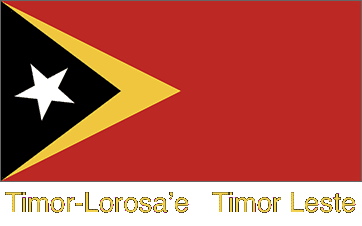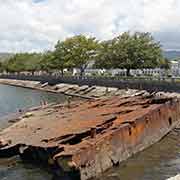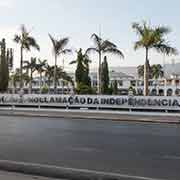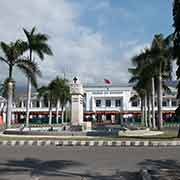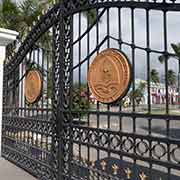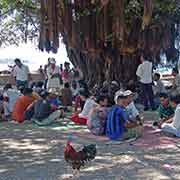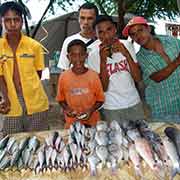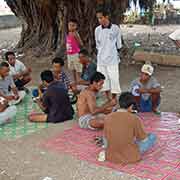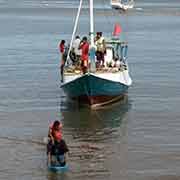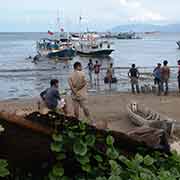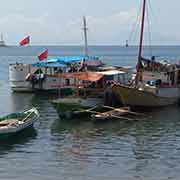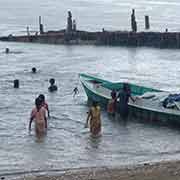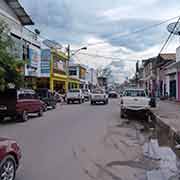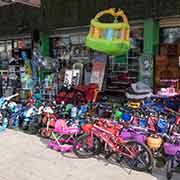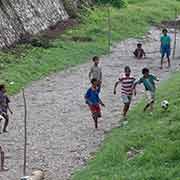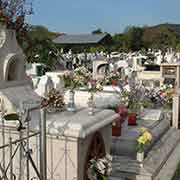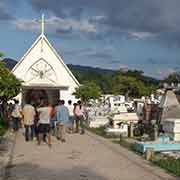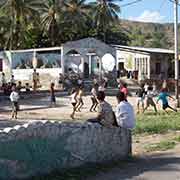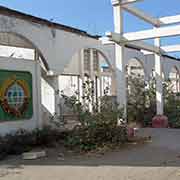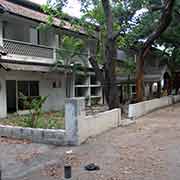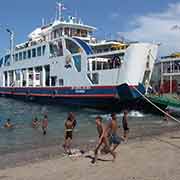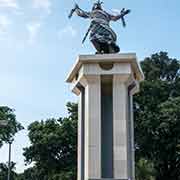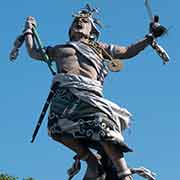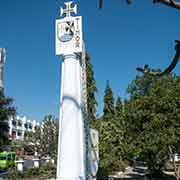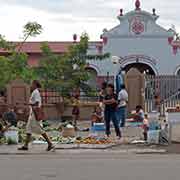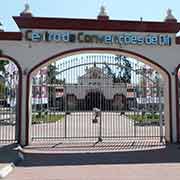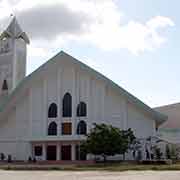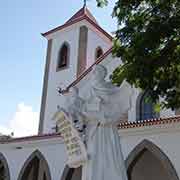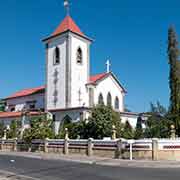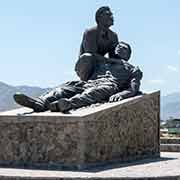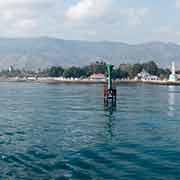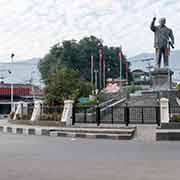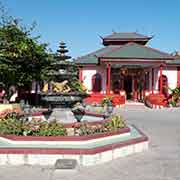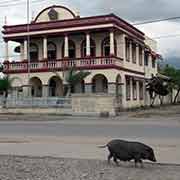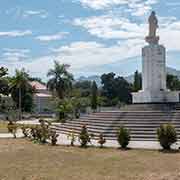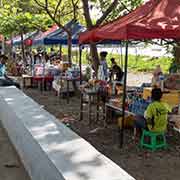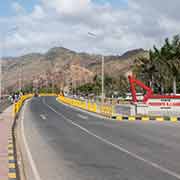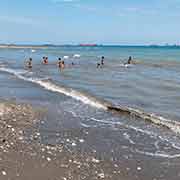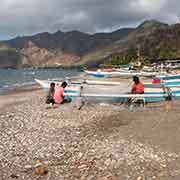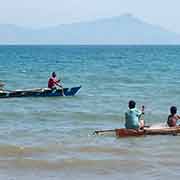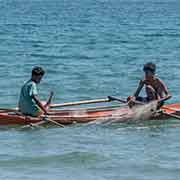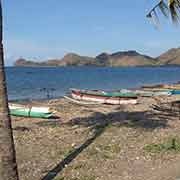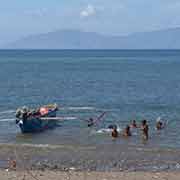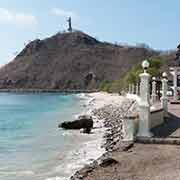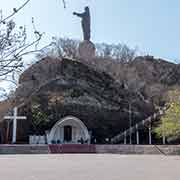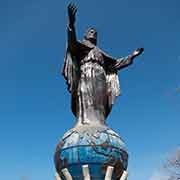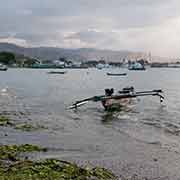Photos of Dili, the capital of Timor-Leste
Dili, the capital of Timor-Leste
Dili is the capital and, with around 150,000 people, the largest city of Timor-Leste. Situated on a bay, it stretches from Nicola Lobato International Airport in Comoro (about 6 kilometres west of the town centre) to Cape Fatucama, on the northern coast. It is also the chief port and commercial centre of the country.
you may then send it as a postcard if you wish.
The harbour is the main area of activity, with two ferries and small boats coming and going from Ataúro island, 30 kilometres across Wetar Strait. The Berlin Nakroma ferry landing also provides transport to the exclave of Oé-Cusse can be had. Old Portuguese cannons still point out to sea and men sit in the shade, playing cards or just relaxing. Fishing boats come and go along the beach and fish can be bought at market stalls, set up under the massive trees. Further east, houses are facing the beach, with outrigger canoes drawn up. About 4 kilometres from town, a beach is known by its Portuguese name of Areia Branca or the Indonesian name of Pasir Putih (white sand) is quite pleasant, with thatched shelters and a lovely view across the bay to the city.
Cape Fatucama, at the eastern end of the bay, features a massive statue of Christ, not unlike its famous counterpart in Rio de Janeiro. But this one, standing on a globe, was built during the Indonesian occupation and pointedly made precisely 27 metres high: East Timor (Timor Timur or Tim Tim in Indonesian) was its 27th province. President Soeharto himself even unveiled the statue in 1988, and it was subsequently blessed by Pope John Paul II when he visited in 1989. A path can reach it, lined with 14 Stations of the Cross and a flight of stairs, via a chapel at the base. There is an excellent view from the top.
Portuguese settled here in 1520 and made it the capital of Portuguese Timor in 1596, which it remained until 1974 when Portuguese rule came to an end after the revolution in Portugal. The UDT party (União Democratica Timorense, Timorese Democratic Union) staged a coup in Dili on 11 August 1975. A brief civil war followed and the Portuguese administration withdrew to nearby Ataúro Island. FRETILIN (Frente Revolucionária do Timor-Leste Independente, Revolutionary Front for an Independent East Timor), won the civil war and declared independence on 28 November 1975. Indonesian paratroopers descended on Dili nine days later, a landing fleet arrived, and soon executions took place on Dili wharf. On 17 July 1976, Indonesia annexed East Timor, making it the 27th province of Indonesia with Dili as its capital.
On 12 November 1991 during a peaceful protest against the occupation, Indonesian soldiers massacred more than 250 people at Santa Cruz Cemetery. Media coverage of this atrocity helped revitalise international support for the East Timorese independence movement. Indonesian President B.J. Habibie eventually allowed a referendum on independence on 30 August 1999. When it turned out that 78.5 % had chosen for independence, pro-Indonesian militias went on a violent spree, destroying, looting and pillaging. Many buildings in Dili were destroyed. However, the city still has many buildings from the Portuguese era, now restored. The most splendid is the Palácio do Governo, the former Portuguese Governor’s office which is now the office of the Prime Minister.
Most East Timorese are devout Roman Catholics; the Roman Catholic Church at Motael became a focus for resistance to Indonesian occupation. The Cathedral of the Immaculate Conception was built in the Indonesian era; it was even opened by General Soeharto in October 1989 and is the largest in South East Asia. Another reminder of the occupation is the “Integration Monument”, a statue of a Timorese in traditional dress, breaking chains around his wrists. Placed on a 10-metre high pedestal may have saved it from demolition and it now has been painted in traditional designs. The house of Bishop Carlos Belo has been restored after its destruction in 1999. It is now the Episcopal Palace Lecidere. Bishop Belo tirelessly worked on behalf of the East Timorese, protesting the massacres and arrests and giving people sanctuary in his own home. He was awarded the Nobel Peace Prize together with future prime minister José Ramos Horta in December 1996.


